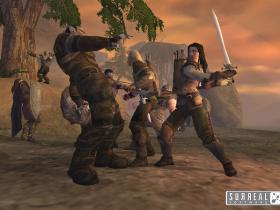

One notable mission from the religious ones are the “Spread the Reformation” / “The Religious League” missions which you unlock by either taking Reformation or Catholicism missions respectively. Completing the mission “The Age of Reformation” fires the following event which unlocks your religious missions: These are focusing on the religious direction of your country: stay loyal to the Catholic Church, embrace the Reformation or become a state of Tolerance. The second biggest branch of the flavor events are the branching missions on the most right. The missions linked to “Colonial Ambitions” are the biggest branch of this mission tree and cover the colonial ambitions of Denmark with a big focus on colonizing valuable trade company regions and a lesser focus on the New World (which also gets updated if you happen to play with a Random New World). Now that we are done with the European affairs part of the mission tree it is time to go into detail for the second block of missions.

Highlight here is a permanent +25% Trade Efficiency modifier. The rest of the mission branch is then about conquering Estonia and Novgorod and of course expanding the Sound Toll.

Because of that, you will most likely know to appreciate this decision as this will trigger a DEFENSIVE war against the Hansa. The mission “The Cities of the Hansa” will require you to control all the important centers of trade in the Lübeck trade node - all lands in the HRE. The mission “Humiliate Lübeck” unlocks a decision for you which will be very much needed for the next mission: Some of you, the community, already commented how the poor merchant republic of Lübeck gets bullied in this DLC and Denmark’s mission tree continues with this trend. The most left branch of the missions is more concerned about a more important enemy Denmark is facing: the Hansa. These missions are referencing the North Sea Empire, but the mission descriptions make clear that the conquest of England is motivated by maritime rivalry and commercial dominance in Lübeck and the English Channel, not by the lost accomplishments of the Danish vikings centuries ago. The most right side of the missions are quite obvious what they are about: challenge the English navy, conquer England and gain dominance in the British Isles. Now that we are done with the Kalmar Union section let’s take a look at the remaining missions of the first block. It is, however, a purely visual title and you gain no other benefit than having an unique title. In a time where Cristopher and his heirs might have managed to keep the union together it seemed plausible enough to us that future generations of Danish rulers might choose to follow Christopher’s naming fashion. Historically, only Christopher III von Wittelsbach styled himself as “Arch-King” while everyone else in Europe just used the normal title. It also focuses on the ambitions Denmark had during the time period of EU4 and as such is a lot less experimental than the Teutonic and the Livonian Orders’ mission trees. The goal of the Danish mission tree is to avoid this fate.
#Europa universalis 5 lord of the rings free
Since its inception this Kalmar Union has been led by the Danes, the strongest and richest of the Nordic powers, close to the continent with an ambition to control and dominate the Baltic Sea area.Įventually however, the Kalmar Union fell apart when Sweden broke free from Denmark and established an empire of its own later on. At home, the royal family, spearheaded by Margaret I, would finally place a singular dynastic head on each of the three lions’ thrones, during the last years of the 14th century.Īs of the treaty of Kalmar in 1397 the Nordic Crowns of Norway, Sweden and Denmark are intended to be borne by one monarch. At the same time, the Christian church had, at that point, come to dominate religious matters all across the Scandinavian region. Hej allesamen! Welcome to our next Development Diary for Europa Universalis IV! After covering the Baltics it is finally time to switch our focus to Scandinavia, so let’s get started!Īs the 13th century drew to a close, powerful social mechanisms such as feudalism and manorialism had formed deep roots in the Danish Court.


 0 kommentar(er)
0 kommentar(er)
